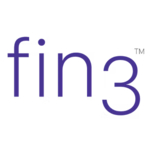Adverse media screening: a key pillar of financial crimes compliance
The scale, complexity and sophistication of financial crimes has been rapidly rising over the last decade. Technology advancements have improved banks’ and financial institutions’ (FI) capabilities of prevention, detection and reporting of such crimes.
But the same advanced technology is being exploited by criminals to benefit them by proliferating more innovative financial crimes, leading to expanding typologies in fraud and money laundering among others.

Can we leverage AI to enhance the effectiveness and efficiency of adverse media screening?
Adverse media screening is a critical component of financial anti-crime measures adopted by banks and FIs, as regulators across the globe, from Financial Crimes Enforcement Network (USA) to European Commission (EU), Financial Conduct Authority (UK) and several others, are enforcing strict requirements on the same. It is mandatory during onboarding know your client (KYC) checks, scheduled reviews and ongoing monitoring as part of customer due diligence (CDD).
It is essential to gather all details about a customer, or prospect to be onboarded as a customer, including any negative information about them so that the bank can take a risk-based approach on the relationship with such customer.
Technology has enabled us to access staggering volumes, variety and velocity of news and information from around the world. Is it then humanly possible to screen millions of customers of any bank by searching the web for adverse news, analyse every negative news item and then consider them for risk profiling of the accused customer? Can we leverage artificial intelligence (AI) instead, to enhance the effectiveness and efficiency of adverse media screening?
Negative news and adverse media screening: the current landscape & challenges
Most banks and FIs currently conduct adverse media screening by manual search in the public domain, e.g. through Google or Bing, generally during onboarding and periodic reviews of customers. Such searches are based on names and keywords and generate large volumes of results. Analysts then read through these results to identify relevant matches. This process has proven to be deficient due to the following challenges:
- Manual analysis of huge volumes of search results for each customer is time consuming and error prone.
- Search results are often mismatched in terms of context and intended customer, as keyword searches display results even where the bank’s customer is not the perpetrator but has been mentioned in the article in some other context. Also, results display entities with same name as that of the bank’s customer and need to be discounted.
- Public domain search has limitations as only open web articles are searched, though there are multiple other news and data sources.
- News published in a local language may not match keywords entered in English (or another language), and hence do not show up in the results.
- Due to the time and effort this process entails, banks are not able to conduct negative news screening periodically on their entire customer base.
AI driven adverse media screening: strengthening compliance
Artificial intelligence (AI) has made an emphatic entry in the area of automation of negative news screening and optimization of search results analysis. Machine learning (ML) and natural language processing (NLP) based innovations, all part of the AI family, have been disrupting the financial crimes compliance technology landscape. And now they are transforming the negative news screening function, with automated advanced matching, monitoring and adjudication of search results. Here is how intelligent matching solutions can strengthen adverse media screening:
- Deeper and wider search across the open web, deep web and other premium information sources that include structured and unstructured data. Global and local news in multiple languages can also be sourced and matched with keywords using linguistic adaptations.
- Contextual matching capability ensures that news articles where the intended customer is mentioned in negative light are only alerted.
- Risk events and indicators for search include adverse news in categories like legal, criminal, financial, regulatory, reputational, environmental, social and other breaches. The alerts are grouped under the respective categories based on the news content.
- Risk score based match confidence level is generated for every news alert displayed, which indicates the likelihood of the alert being a true match. This helps in prioritisation of alerts for analysis.
- Auto adjudication during alert triage can be configured based on alert risk and confidence scores. The criteria for discounting an alert as false must be decided by the bank, based on which the machine learning algorithm can dispose an alert. The logic for such action is mentioned as an alert closure comment.
- Scheduler based periodic screening ability allows banks to execute batch screening of customers at frequencies as decided by them, which is configurable. This is in addition to real time screening capability of such solutions.
- Auditability is ensured, as AI based screening and adjudication results can be stored with audit trail, either in an on-premise database or on the cloud.
Implementing AI based adverse media screening: a transformation journey
Moving from non-existent or manual negative news screening to intelligent machine based screening can be a complex transformation journey for a bank or FI. Consideration of the following aspects while embarking on this journey can help to achieve the desired results in terms of compliance, alert optimisation, false positive reduction and higher confidence in true positive detection:
- Quality of customer data held within the FI
Customer data being the primary information that needs to be matched against external news databases, its quality impacts the screening results and adjudication. Enriching customer data quality through analytics and integrating with external data sources can enhance the matching results.
- Data sources for negative news screening, global and local
AI based tools can search varied news sources, including news in local languages and generate relevant search results through linguistic adaptations. A bank needs to decide the optimum news sources for such search, as too many or too less sources can impact effectiveness of this screening. Skipping local news databases can also mean missing important information not reported globally.
- Screening schedule
Daily batch screening for negative news screening may be difficult for any bank due to the high volume of news reports churned out by the large number of news sources every day. Banks can optimize adverse media screening schedules by using a risk-based approach – screening for high risk customers more frequently, e.g. weekly, while lesser frequently for medium and low risk customers. Customer specific feeds can also be scheduled if a bank decides to adopt that approach, in addition to real time screening.
- Criteria for auto adjudication of false alerts
For negative news alerts generated using AI based tools, the algorithms assign risk and likelihood scores to each alert. Disposing an alert at level one can be configured in such tools in two ways, and a bank needs to decide which method it wishes to adopt. In the first method, configuration can be rule based, by tagging alerts as low, medium or high risk as per agreed risk score ranges. Low risk alerts can be directly discounted, high risk ones directly escalated to level two, and only medium risk alerts can be investigated at level one. Alternately, the AI algorithms can be built to dynamically adjust the ranges of low, medium and high-risk alert based on continuous learning, and follow triaging as per risk levels accordingly.
- Integration with KYC workflow
Manual search for negative news is followed by capture of the results in the KYC workflow platform. Moving to an AI based screening would require FIs to integrate the screening tool with the KYC workflow, where screening alerts can be ingested. In case an FI has disparate KYC systems, it may require an integration of the KYC workflows and case management to a single platform and then connect the screening solution to it.
- Regulatory acceptance
Regulators across the globe, from FinCEN and OCC (USA) to Austrac (Australia), MAS (Singapore) and FCA (UK), are encouraging FIs within their jurisdiction to leverage innovative digital tools to augment their financial crimes compliance platforms. So, using AI for adverse media screening, with appropriate audit trail, may well be within Regulatory acceptance as adoption of machine based compliance is rapidly expanding.
A few banks and FIs have already initiated this journey, while a few others have started exploring. It may be just a matter of time when the benefits derived and lessons learnt from their experiences will encourage others to follow suit. AI powered adverse media screening may just be the perfect sauce for the KYC-CDD recipe – a stronger defense for financial anti-crimes is here!











































